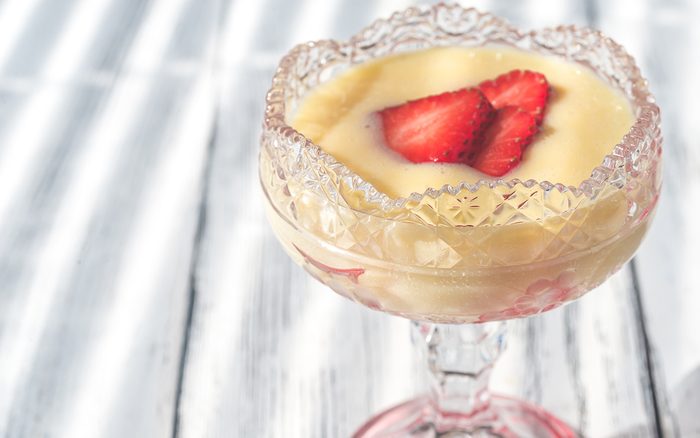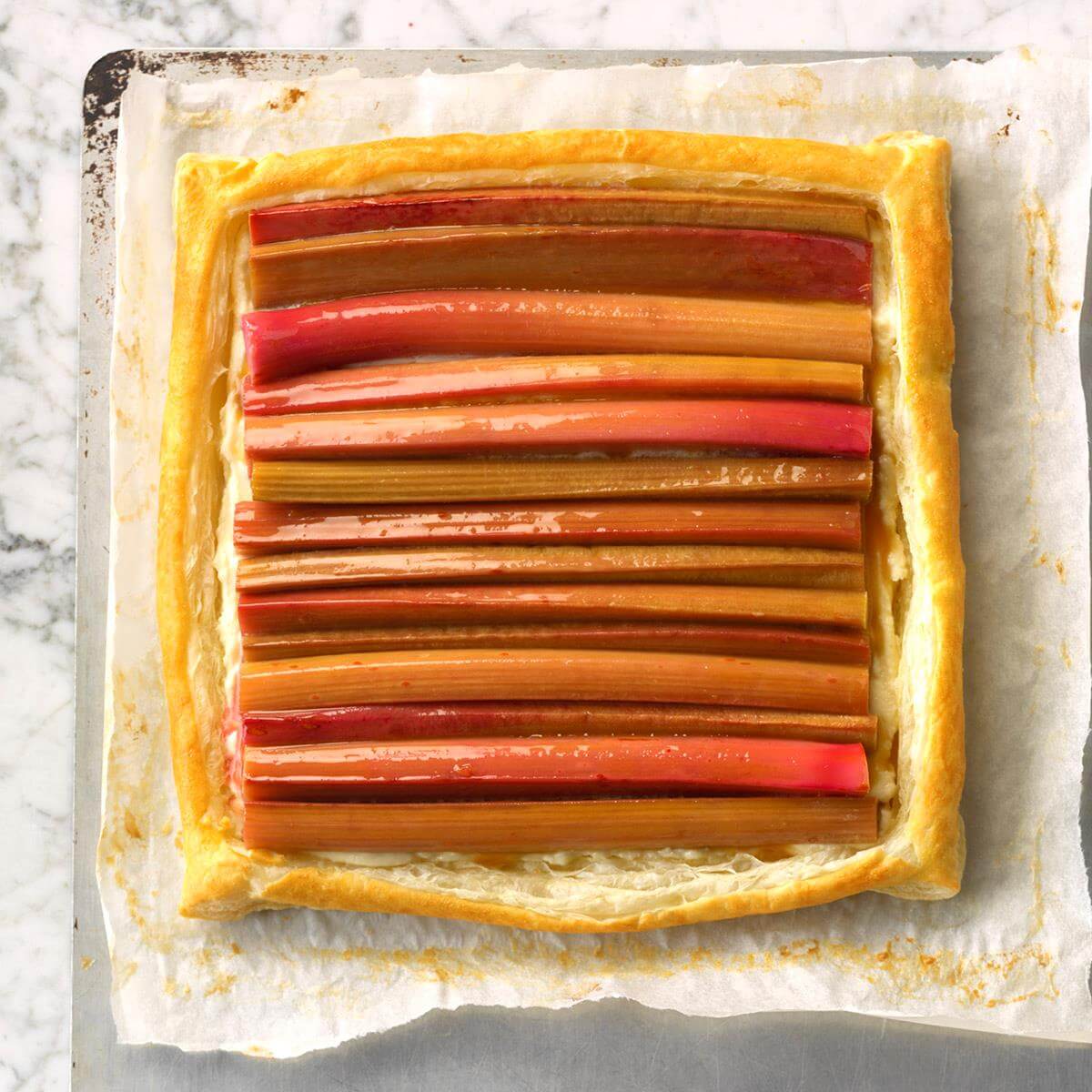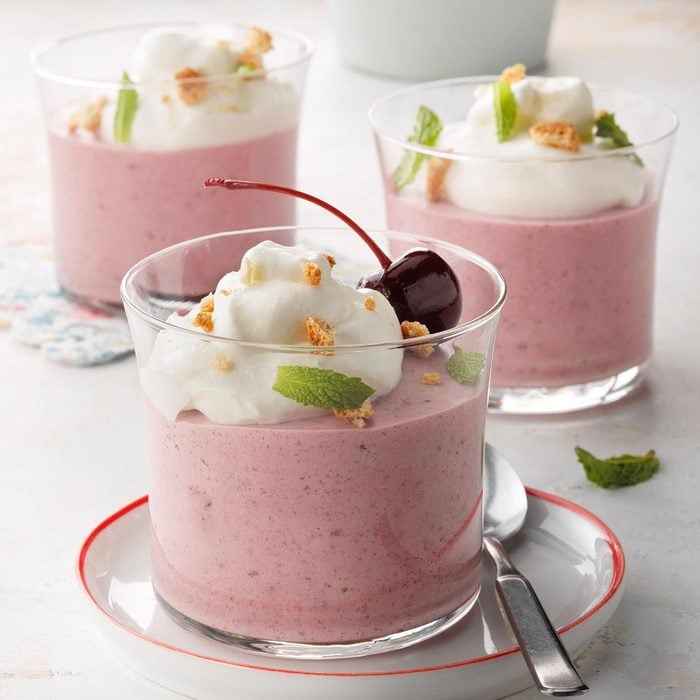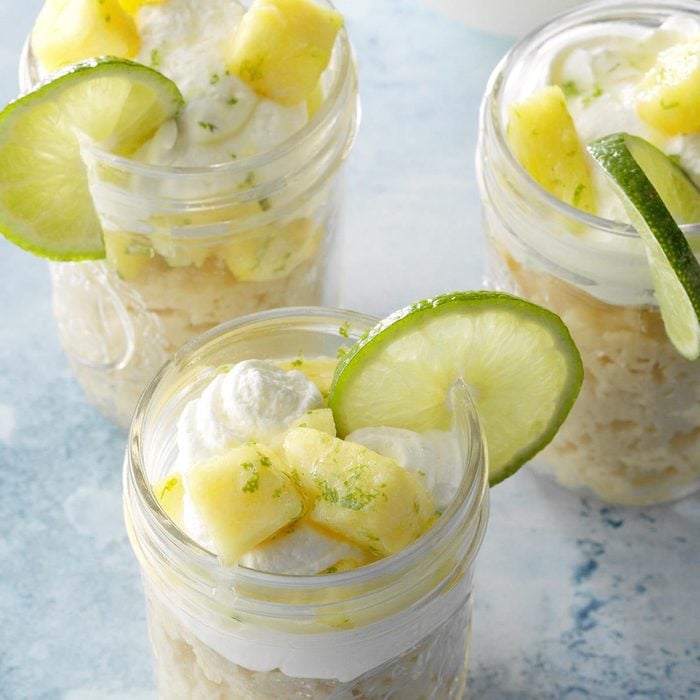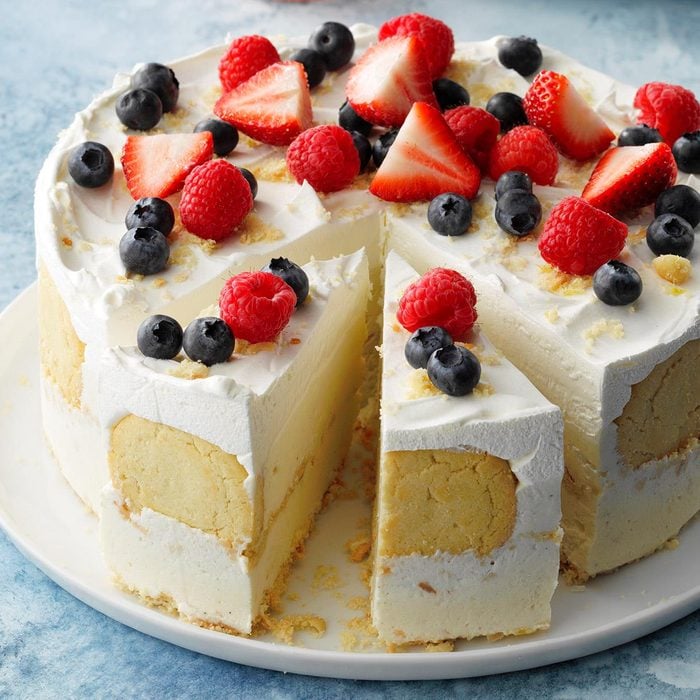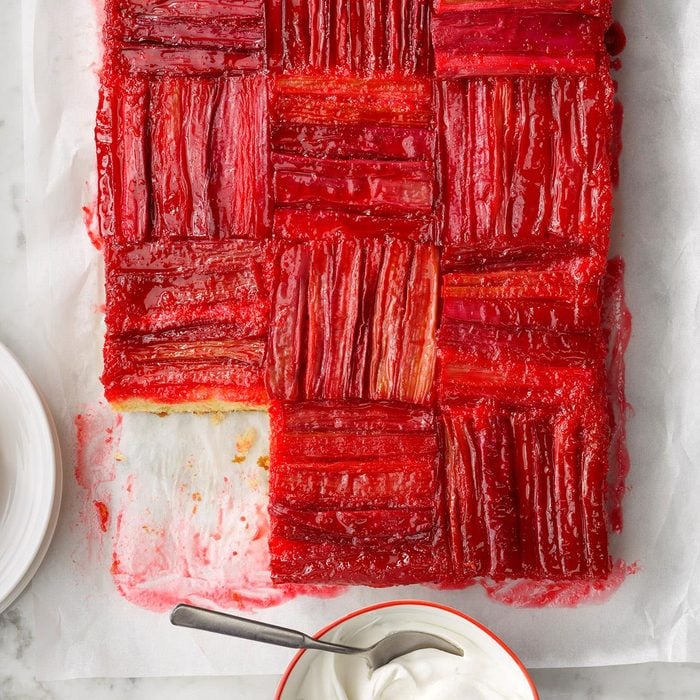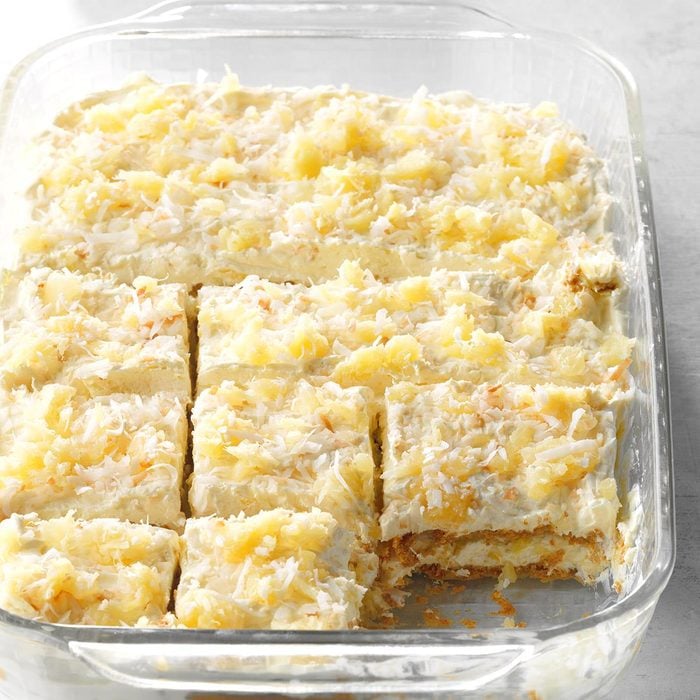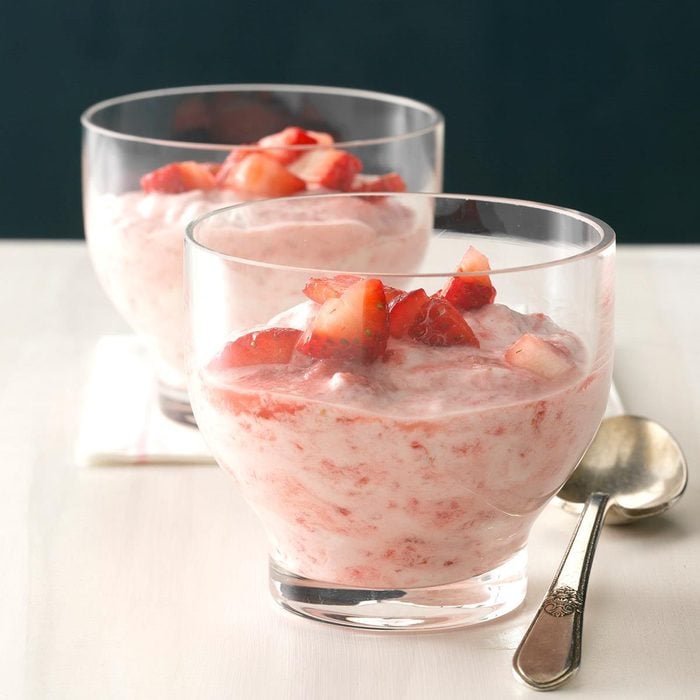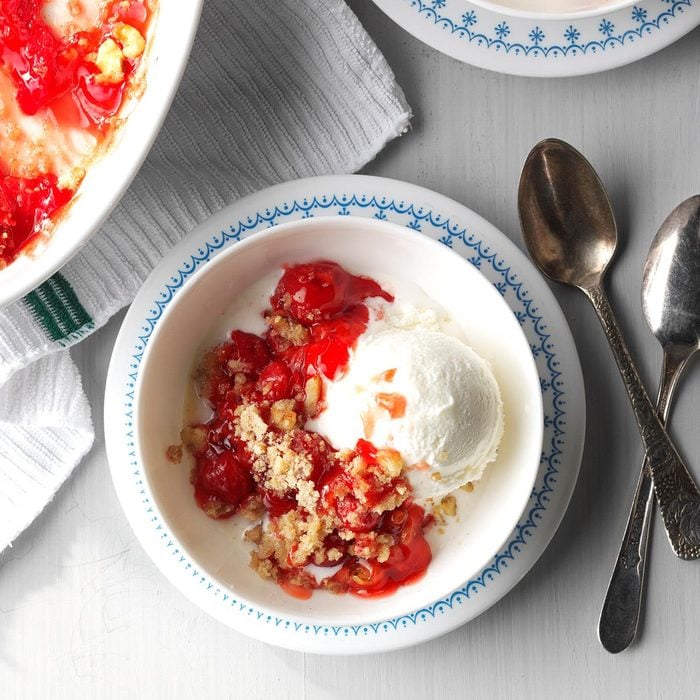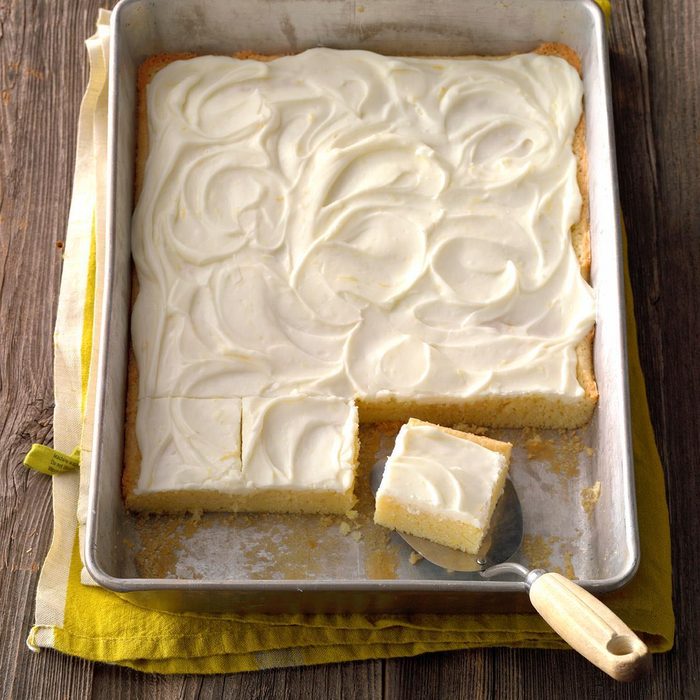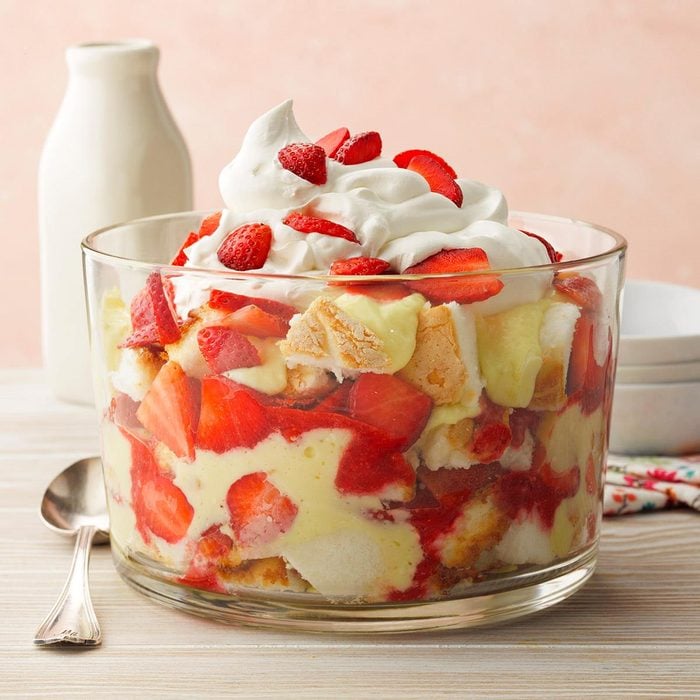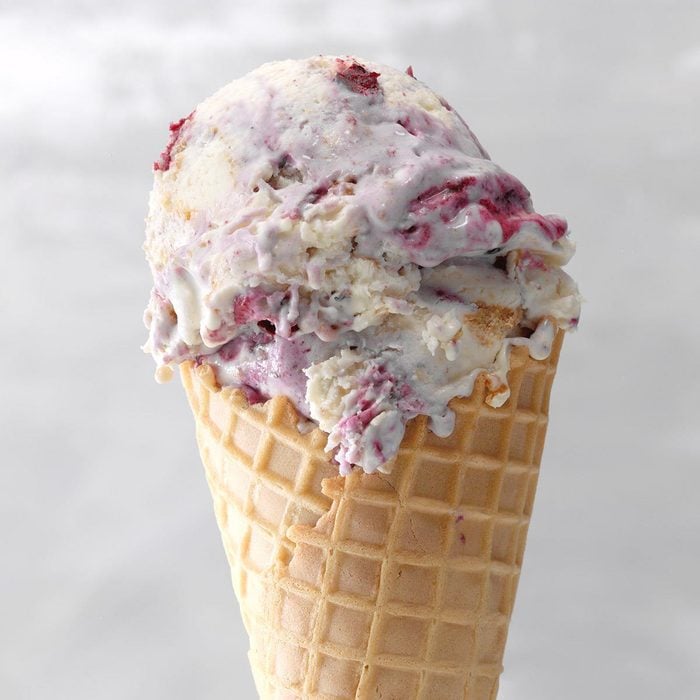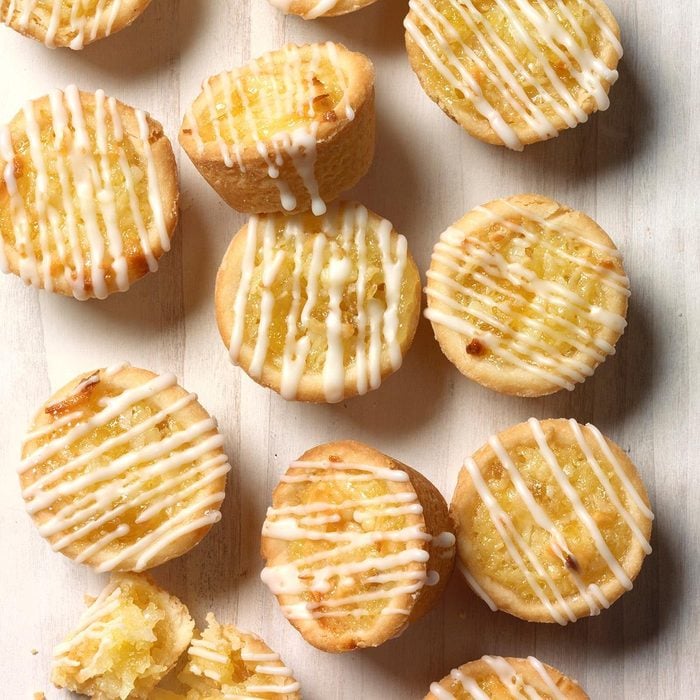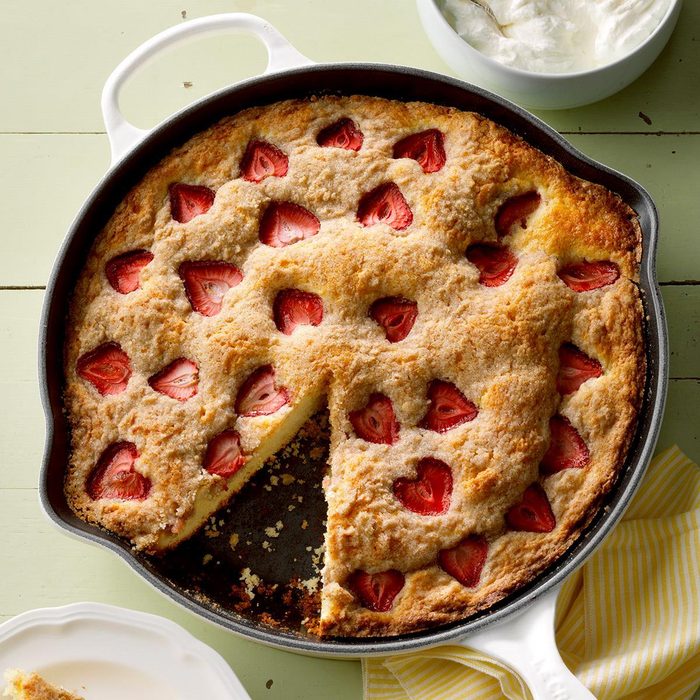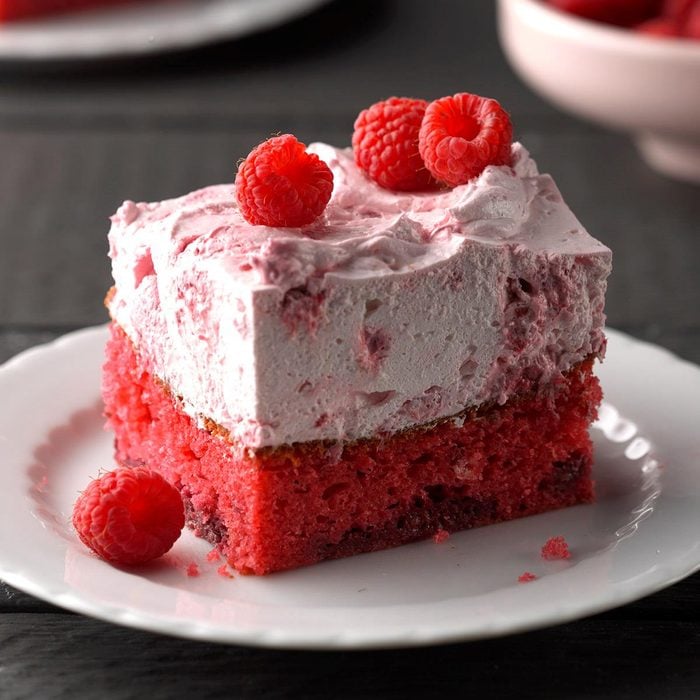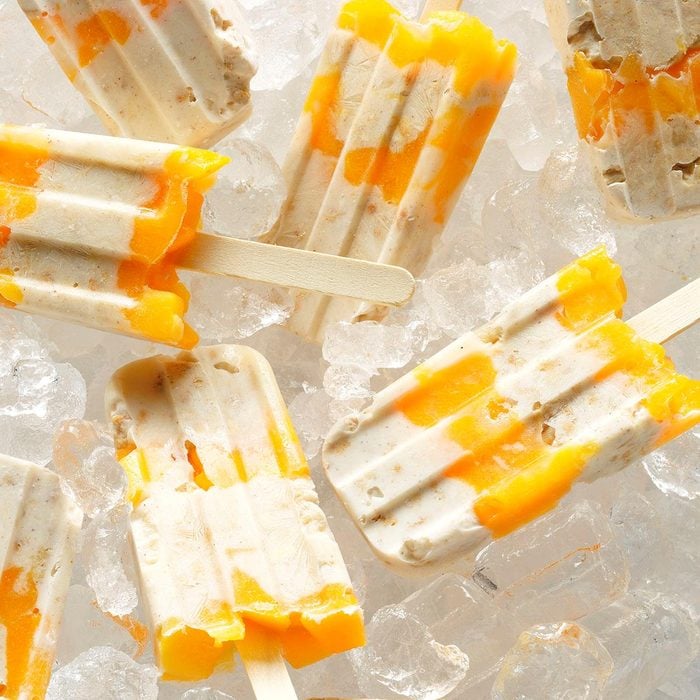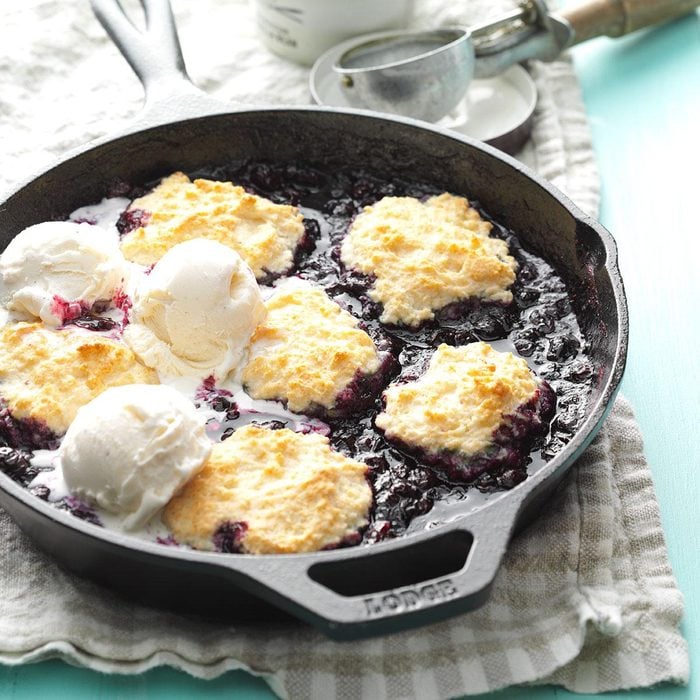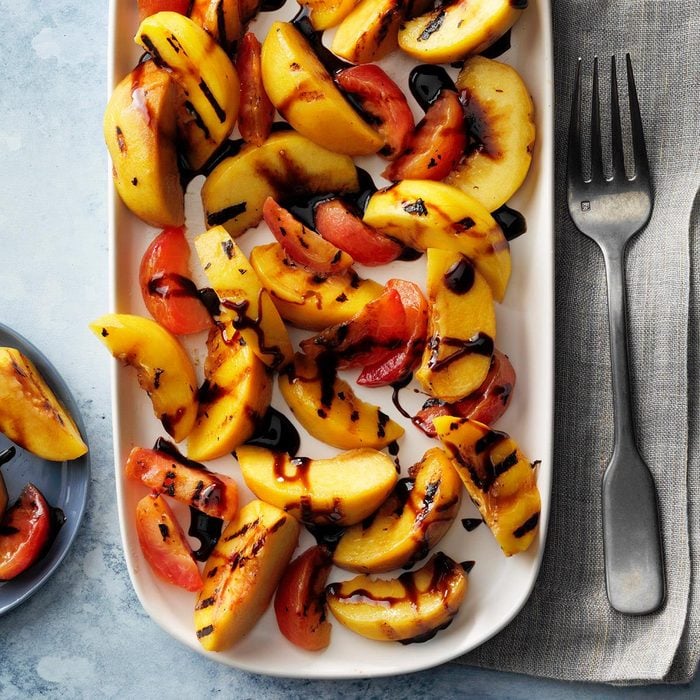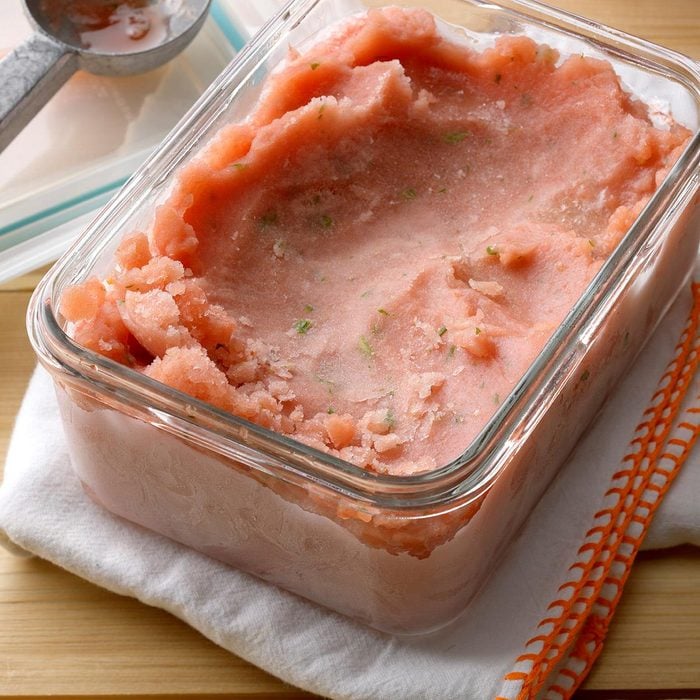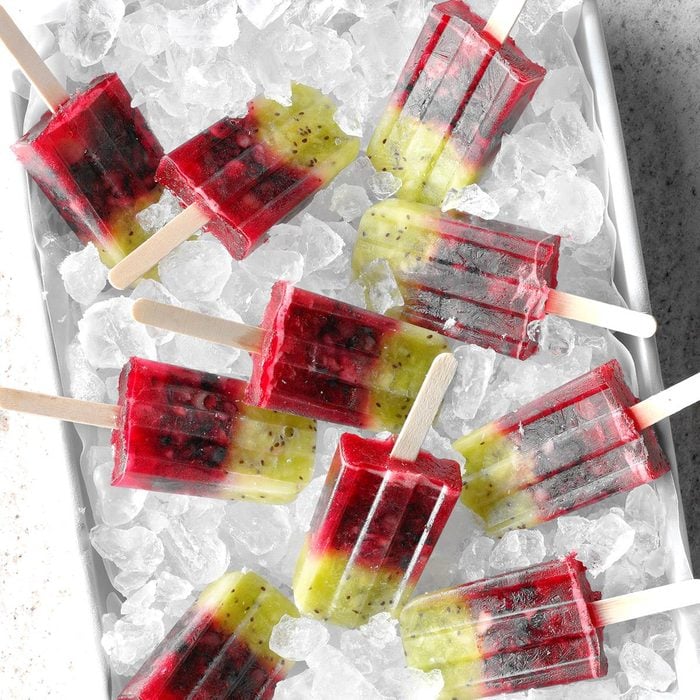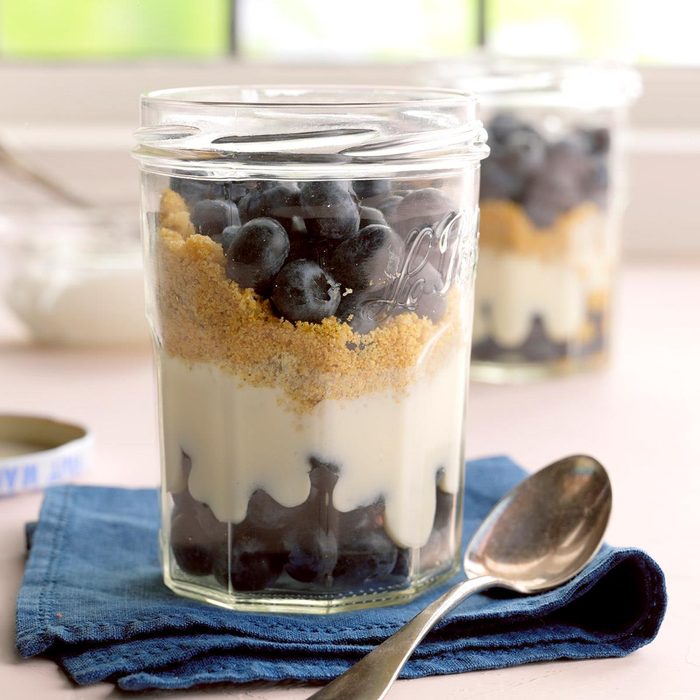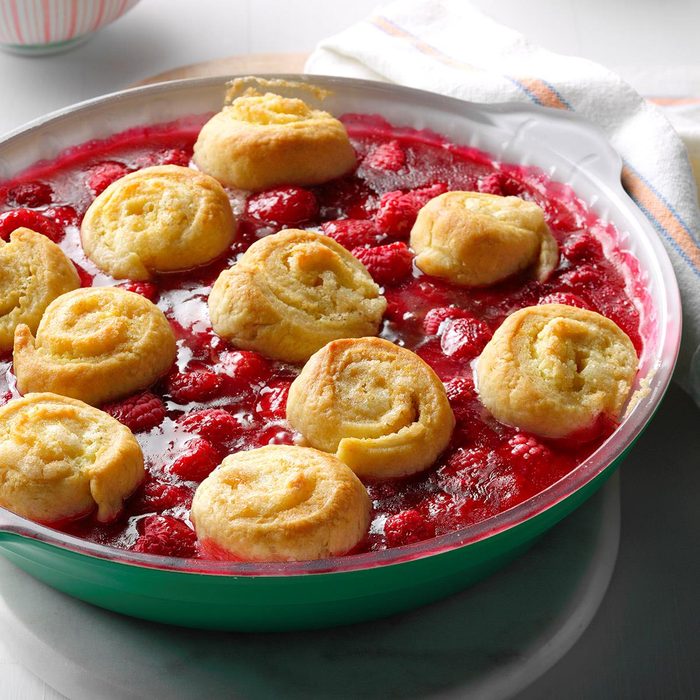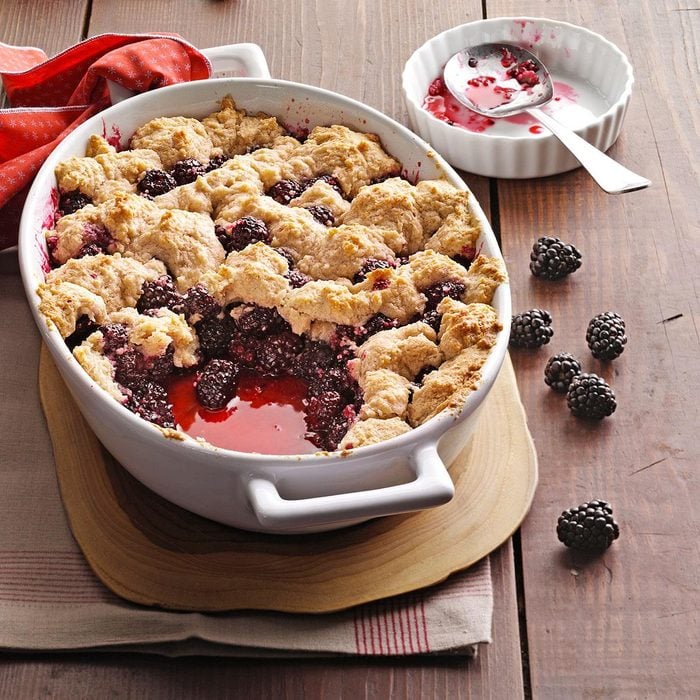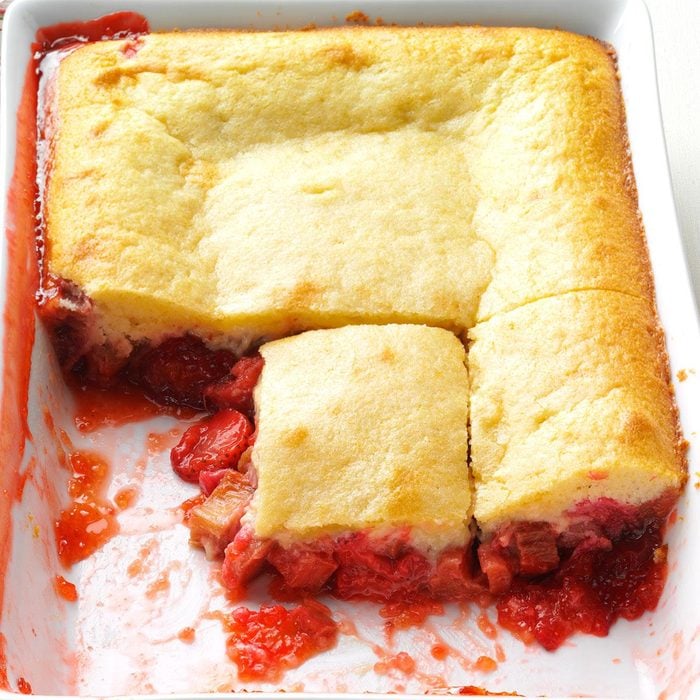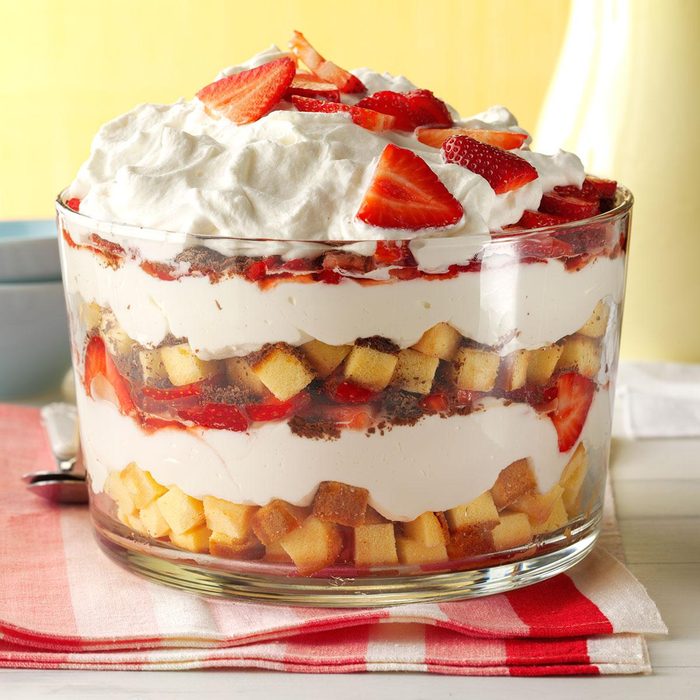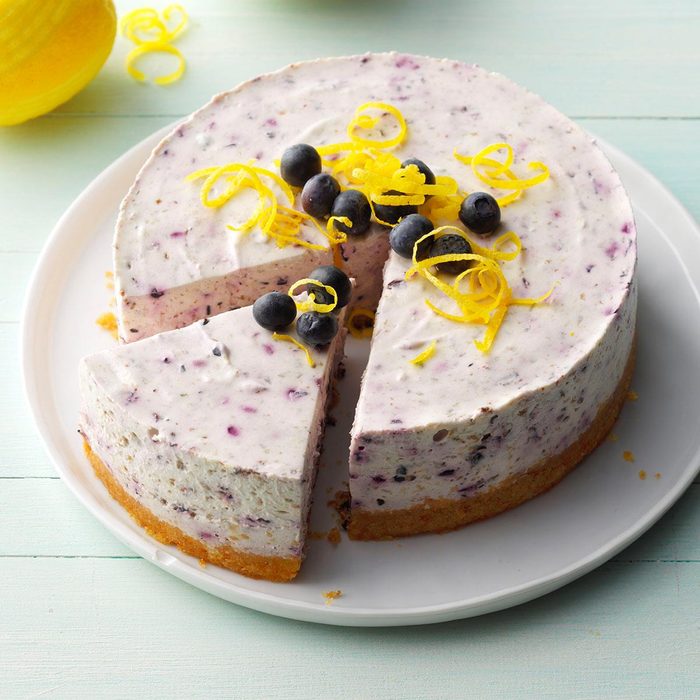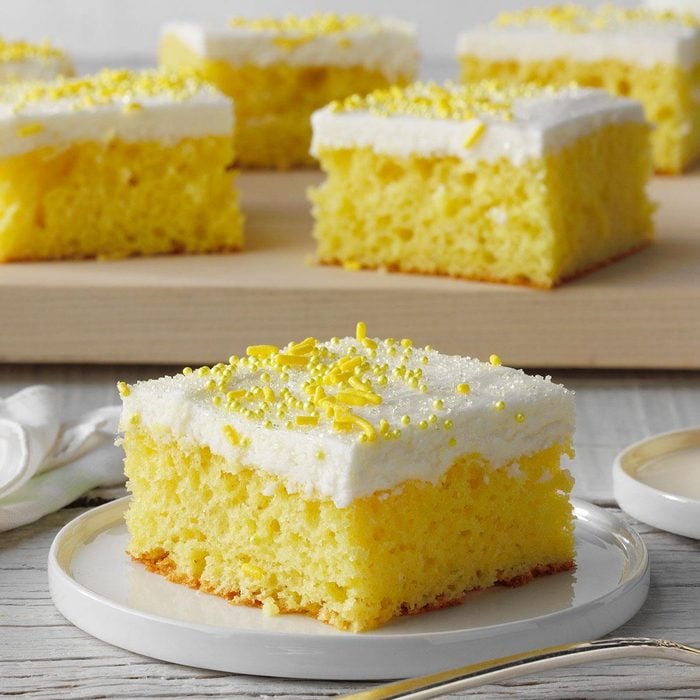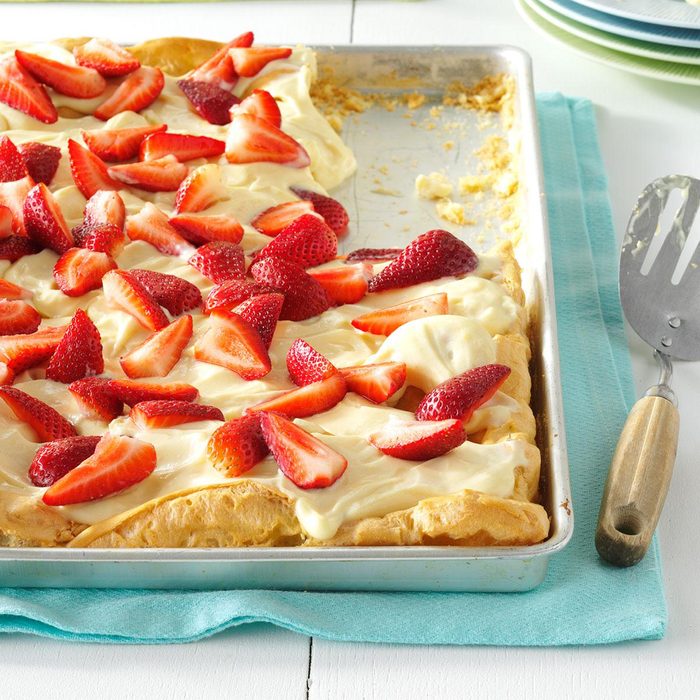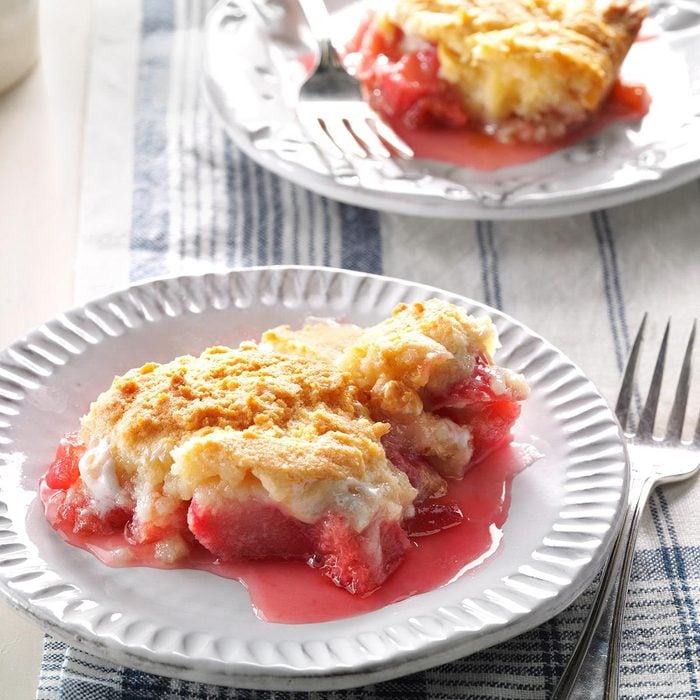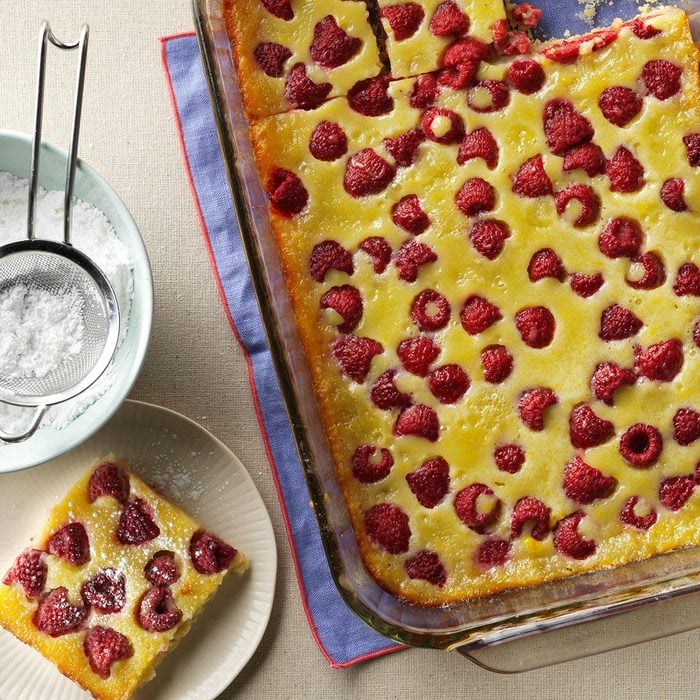Rhubarb Tart
The rhubarb flavor in this tart balances nicely with the honey and amaretto. The mascarpone cheese makes it rich and creamy. Sometimes I'll even double the rhubarb for really sumptuous tarts. —Ellen Riley, Murfreesboro, Tennessee
Get Recipe
Bing Cherry-Amaretti FoolWhen Bing cherries are in season, I make this fruity custard-style fool. The sweet cherries and whipped cream balance perfectly with the sour cream. —Mary Ann Lee, Clifton Park, New York
Grilled Angel Food Cake with StrawberriesOne night I goofed, accidentally using the balsamic butter I save for grilling chicken on my pound cake. What a delicious mistake that my entire family loved! For a patriotic look, add a drizzle of blueberry syrup. —Tammy Hathaway, Freeman Twp, Maine
Pineapple RumChata ShortcakesThis deliciously different dessert is made in the slow cooker instead of in the oven. When done, add final touches to the cooled pineapple shortcake jars and serve. —Joan Hallford, North Richland Hills, Texas
Coconut-Lemon Ice Cream CakeI developed this cool treat because I wanted to find a new use for cream of coconut. The sweet coconut combines beautifully with the tart lemon juice, and the streusel adds a nice crunch. Look for cream of coconut in the cocktail mixer section of your grocery store. —Janet Gill, Canton, Ohio
Creamy Layered Blueberry Ice PopsThese delicious ice pops can also be made with raspberries or blackberries. The rosemary sprig and lemon zest bring another layer of flavor. The pops are quick, easy, kid-friendly and freezable. —Gloria Bradley, Naperville, Illinois
Strawberry-Rhubarb Upside-Down CakeI prepare this colorful dessert quite often in the late spring or summer when fresh rhubarb is abundant. I make this rhubarb cake with cake mix and take it to church potlucks. People actually line up for a piece. —Bonnie Krogman, Thompson Falls, Montana
Peach and Berry CobblerThis is one of my favorite summer recipes because it features peaches and berries that are in season, but it is just as delicious with frozen fruit. The quick biscuit topping brings it all together. —Lauren McAnelly, Des Moines, Iowa
Pina Colada Icebox CakeThis icebox cake has all the flavors of a pina colada. It takes just one bite to escape to a tropical island! —Rachel Lewis, Danville, Virginia
Strawberry Rhubarb CreamA friend gave me this recipe a long time ago. It’s rich and creamy yet refreshing. I make this often in early summer when rhubarb is readily available. —Norma DesRoches, Warwick, Rhode Island
Homemade Cherry CrispOur family loves this pretty, tasty dessert. It uses convenient pie filling, so you can make it in no time—and it takes mere minutes to heat in the microwave. —Laurie Todd, Columbus, Mississippi
Lemon Bars with Cream Cheese FrostingI won a baking contest at Purdue University with this recipe for lemon bars with cream cheese frosting. I think you’ll love the dreamy topping. —Michael Hunter, Fort Wayne, Indiana
Strawberry Lemon TrifleThis refreshingly fruity dessert is one of our favorites. It looks so beautiful layered in a glass bowl that people will think it took ages to make. The secret is starting with a purchased angel food cake. —Lynn Marie Frucci, Pullman, Washington
Apple Cranberry CrispFor a tart twist on an old-fashioned dessert favorite, try this apple cranberry crisp.
No-Churn Blueberry Graham Cracker Ice CreamThis sweet and creamy no-churn ice cream features a fresh blueberry jam swirl and graham cracker pieces. You can use raspberries instead of the blueberries for a different berry flavor. —Heather King, Frostburg, Maryland
Raspberry Crumble BarsUse fresh or frozen fruit to make a tart, tender batch of raspberry crumble bars.
Pineapple Coconut TassiesThese cookies may sound and look fancy, but they're rather easy to make Their simplicity makes them an ideal choice for baking with children. My granddaughter enjoys helping me measure the ingredients. Children also can help shape the dough into balls, and then you can finish them together. —Connie Shuff, York, Pennsylvania
Strawberry Buttermilk Skillet ShortcakeThis scratch-made strawberry buttermilk cake is a family favorite. The recipe is over 100 years old, and I remember my grandma making it. We still carry on the family tradition by making this old-fashioned recipe each summer. —Claudia Lamascolo, Melbourne, Florida
Raspberry CakeIndulge in this easy-to-make raspberry cake bursting with fresh raspberry flavor and topped with a luscious whipped raspberry frosting.
Blueberry Zucchini SquaresI saw a bar recipe using apple and lemon zest on a muffin mix. I tried it from scratch with shredded zucchini and fresh blueberries instead. It’s a nifty combo. —Shelly Bevington, Hermiston, Oregon
Coconut Milk Strawberry-Banana PopsThese four-ingredient freezer pops are a delicious way to use up a pint of fresh strawberries. You'll love the hint of tropical flavor, thanks to the coconut milk. —Taste of Home Test Kitchen
Lemon-Lime BarsThis easy lime bar recipe is a dessert that will wow your guests. I baked these bars for a luncheon on a hot summer day. A gentleman made his way to the kitchen to compliment the cook who made them. —Holly Wilkins, Lake Elmore, Vermont
Love lime? You won't be able to resist these
margarita dessert recipes, either.
Roasted Strawberry Sheet CakeMy Grandma Gigi loved summer berry cakes. Almost any time I’d call her during the warmer months, she’d invite me over to taste her latest masterpiece. This cake is a tribute to her. —Kristin Bowers, Rancho Palos Verdes, California
Peach Crisp Parfait PopsMy little ones love fruit crisps and ice pops. I created a healthy and delicious treat that combines the two. For a sweet addition, use cinnamon sticks in place of the wooden pop sticks. —Carmell Childs, Orangeville, Utah
Skillet Blueberry SlumpMy mother-in-law made a slump of wild blueberries with dumplings and served it warm with a pitcher of farm cream. We’ve been enjoying slump desserts for 60 years. —Eleanore Ebeling, Brewster, Minnesota
Rhubarb Custard BarsA decadent fruit dessert with a luscious custard filling and tangy cream cheese topping, these rhubarb bars are about to become your new favorite.
Peach Cobbler RecipeThe first step to making peach cobbler? You have to choose perfect peaches. We'll walk you through the recipe.
Cherry-Chocolate Pudgy PieHere’s an ooey-gooey treat that’s just right for campfires and cookouts. —Josh Carter, Birmingham, Alabama
Grilled Stone Fruits with Balsamic SyrupGet ready to experience another side of stone fruits. Hot off the rack, these grilled nectarines practically melt in your mouth. —Sonya Labbe, West Hollywood, California
Blueberry Angel DessertMake the most of angel food cake, pie filling and whipped topping by creating this light impressive dessert that doesn't keep you in the kitchen for hours. It's the perfect way to end a summer meal. —Carol Johnson, Tyler, Texas
Sonoran Sunset Watermelon IceIf you didn’t think watermelon and cilantro could go together in a dessert, this recipe will be a pleasant surprise! Sprinkle pomegranate seeds and a sprig of cilantro on top for extra flair. —Jeanne Holt, Mendota Heights, Minnesota
Triple Fruit FreezeThese pops won't turn your tongue blue or neon green like many store-bought pops because they're made with fresh grapes, blueberries and kiwifruit. —Colleen Ludovice, Wauwatosa, Wisconsin
Strawberry-Lime BarsOur family loves fresh strawberries, so I look for different ways to use them. This tempting, yummy dessert has sweet strawberries, tart lime and salty pretzels. —Alexandra Barnett, Forest, Virginia
Blueberry Graham DessertWhen you're short on time but long for cheesecake, try this fruity dessert. Ricotta and cream cheeses give every bit as much flavor as cheesecake without the effort. Instead of making individual servings, you could layer the ingredients in a glass serving bowl. —Taste of Home Test Kitchen
Lemon Whirligigs with RaspberriesGolden whirligigs with a tart lemon flavor float on a ruby raspberry sauce in this delectable dessert. I love serving it to guests. My children also like it made with blackberries. —Vicki Ayres, Wappingers Falls, New York
Summer Blackberry CobblerMy husband is from Alabama, so I like to treat him to classic Southern desserts. This cobbler is a must-have for us in the summer. —Kimberly Danek Pinkson, San Anselmo, California
Strawberry-Rhubarb Flip CakeMy friend Dave always brought two strawberry rhubarb cakes to work to celebrate his birthday. He’d use up rhubarb growing in the yard and treat his co-workers. —Charlene Schwartz, Maple Plain, Minnesota
Blueberry Buckle with Lemon SauceThis recipe is a family favorite, served warm as dessert, plain or with a scoop of ice cream. My family also likes it cold as a coffee cake. But the lemon sauce topping makes this traditional dessert a little different, enhancing the flavor of the blueberries. —Maureen Carr, Carman, Manitoba
Strawberry Cheesecake TrifleFor a dessert that looks as great as it tastes, this one can't be beat! Layers of rich pound cake, luscious cream and sweet strawberries make this treat very inviting. —Marnie Stoughton, Glenburnie, Ontario
Summer Dessert PizzaEspecially refreshing during the summer months, this dessert lets fresh fruit shine. —Ida Ruth Wenger, Harrisonburg, Virginia
Cherry-Peach DumplingsYou can make this fruity dessert on your stovetop, but to really impress your guests, simmer it in an electric skillet right at the dinner table. There’s no more convenient way to enjoy the fruits of the season. —Patricia Frerk, Syracuse, New York
No-Bake Blueberry CheesecakeBecause this no-bake blueberry cheesecake doesn't contain eggs, it's lighter but also very creamy and refreshing.—Ken Gallagher, Hastings, Nebraska. If you enjoyed this recipe, then you must check out our collection of
easy summer desserts.
Lemon Sheet CakeLemon pie filling lends a splash of citrus flavor to a convenient cake mix, and a rich cream cheese frosting gives the cake sweetness. My family likes this dessert cold, so I cut it into squares and freeze it before serving. —Alyce Dubisar, North Bend, Oregon
Strawberry BlissYou'll love this homemade puff pastry crust topped with a soft-set pudding layer that has a hint of strawberry flavor. This dessert needs to chill for at least an hour, so it's a fabulous make-ahead dish. —Candace Richter, Stevens Point, Wisconsin
Rhubarb Mallow CobblerMy mom used to make this cobbler every year when I was growing up. Now we take fresh rhubarb to my son in Texas so he can share this recipe with his family. —Judy Kay Warwick, Webster City, Iowa
Raspberry Custard KuchenBack where I grew up in Wisconsin, people have been baking this German treat for generations. We love it for breakfast or as a special dessert. It's no fuss to fix and impressive to serve. —Virginia Arndt, Sequim, Washington
